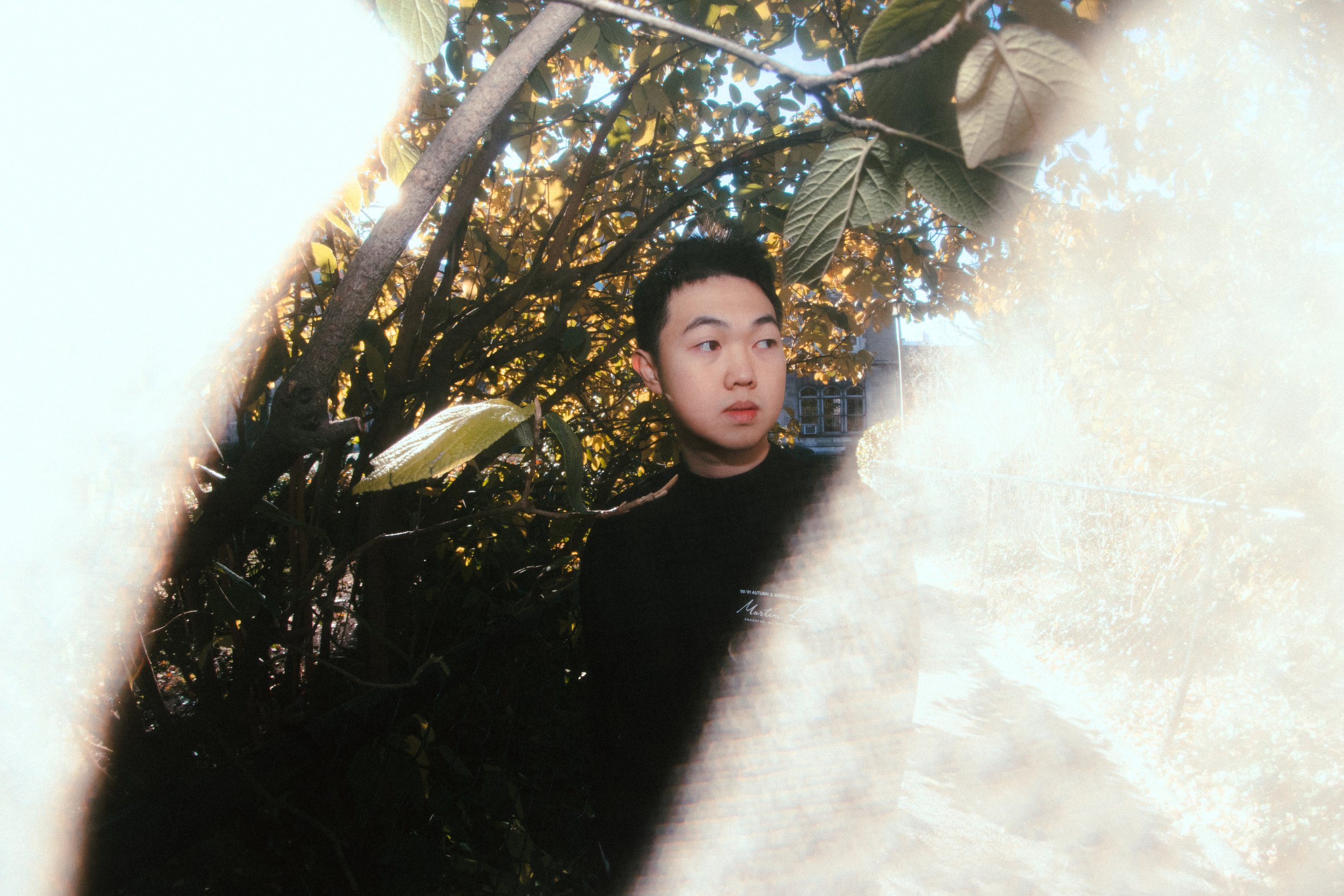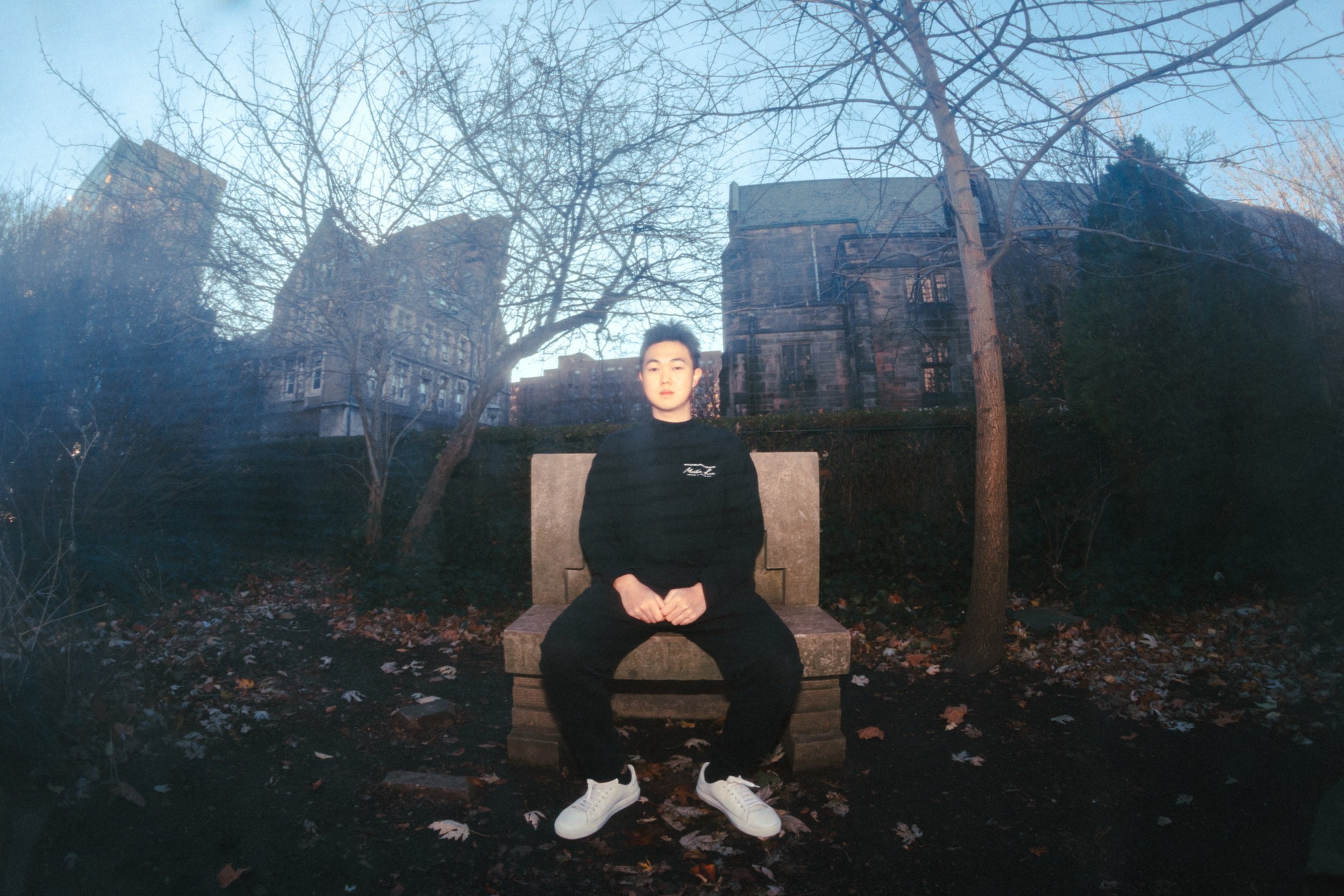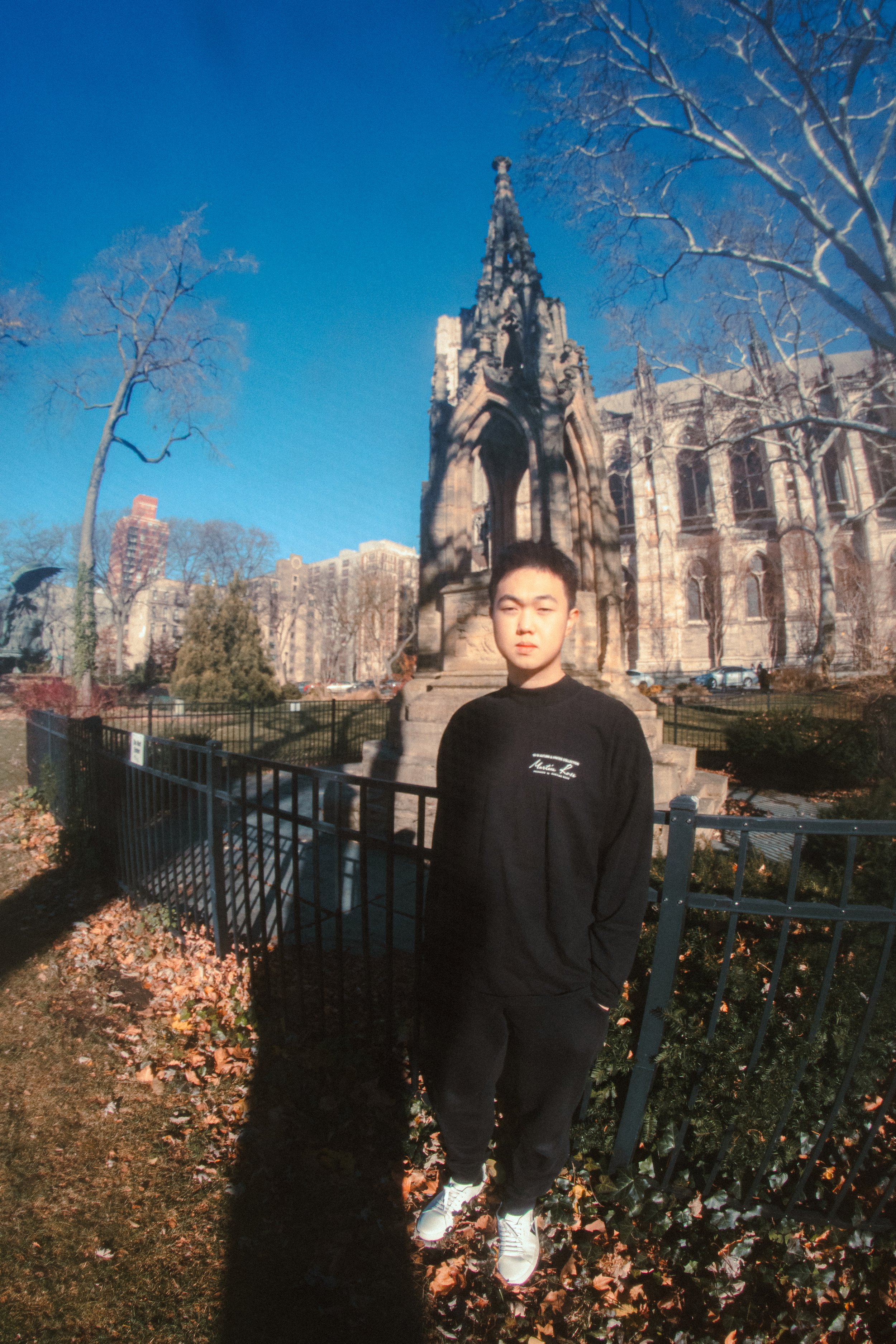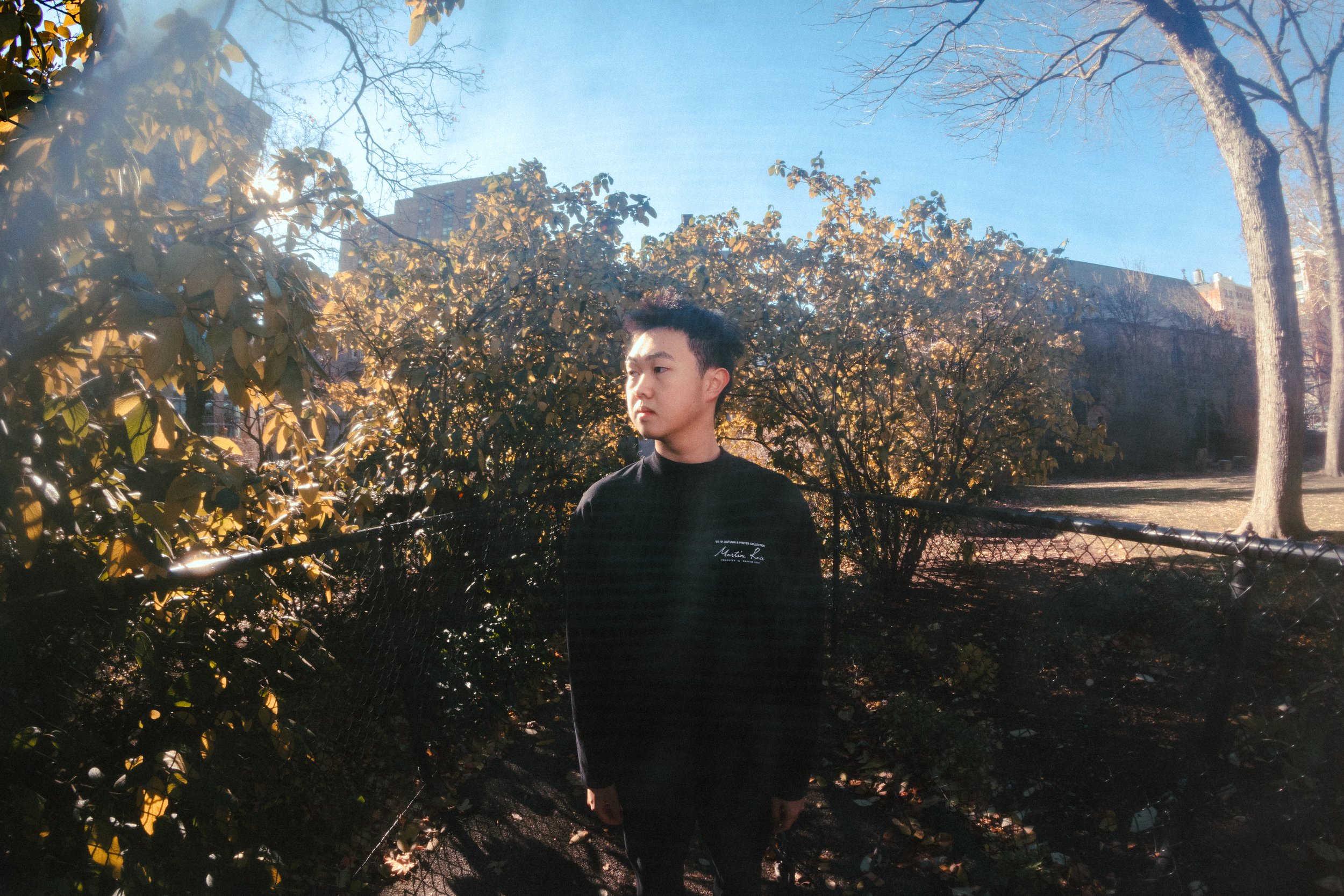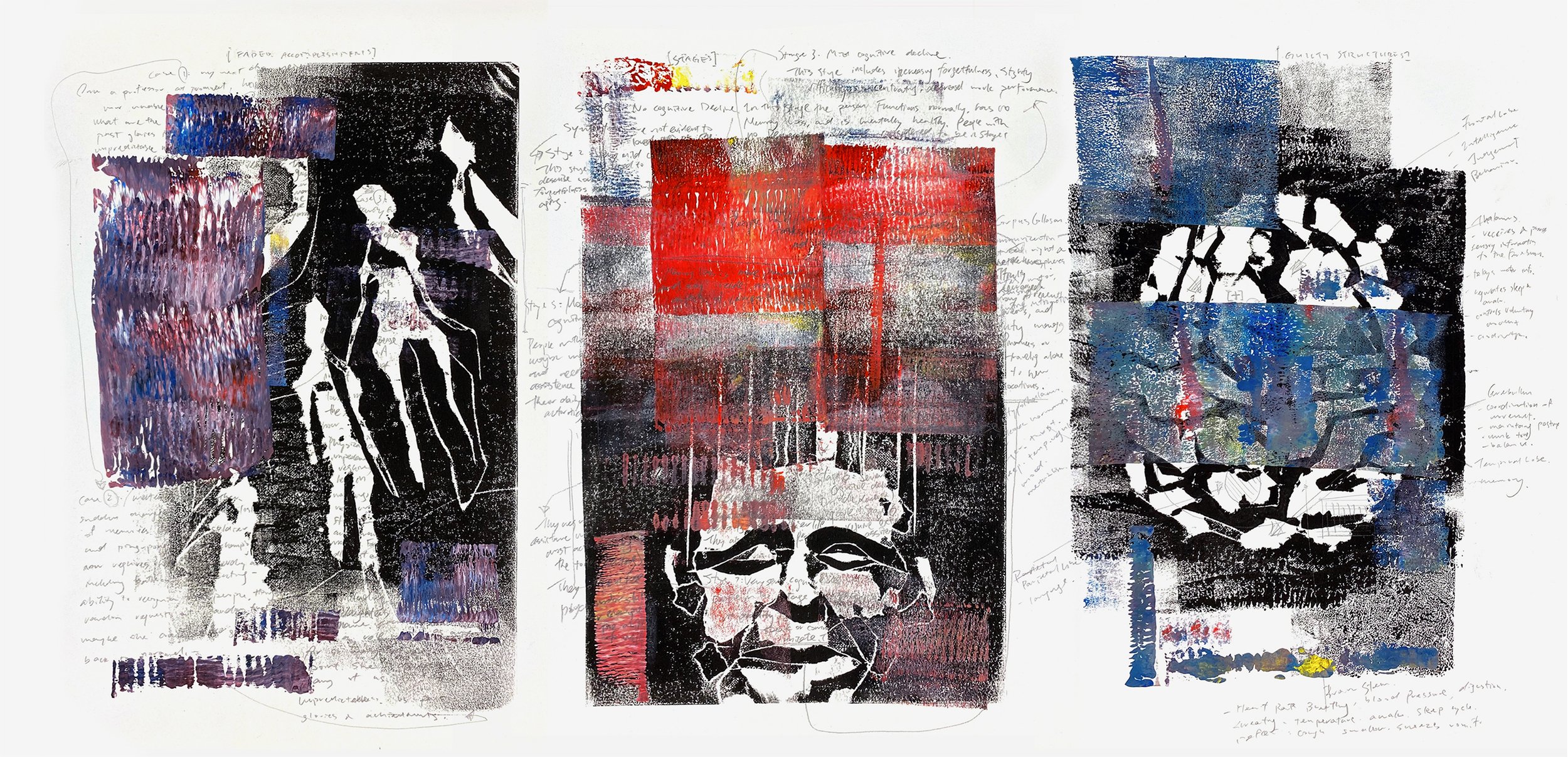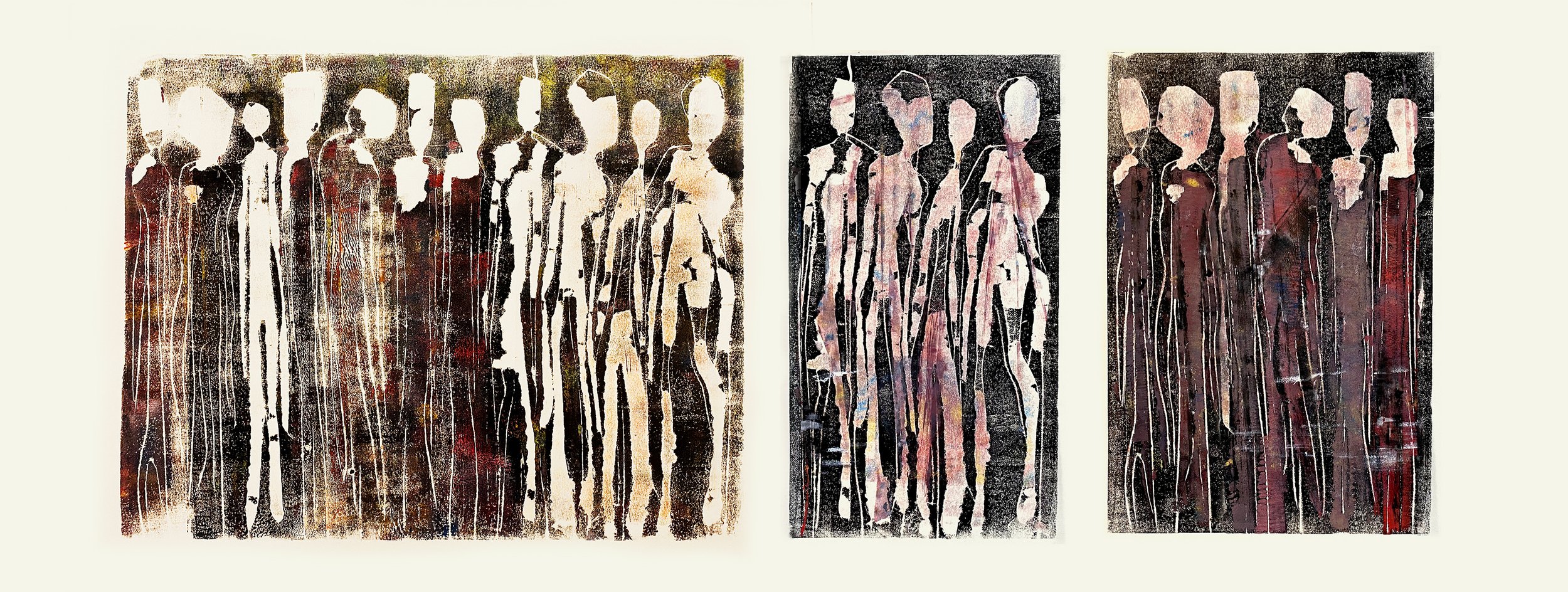Feature by Lexi Phelan
Photos by Jane Mok
I met Benny Yang on a brisk Sunday morning in the tent between Milstein Library and the Diana Center. The sun fought its way through a blanket of clouds just enough to offset the mid-October chill settling over the campus’s changing leaves. Benny joined me for a casual conversation, a break amid the stress of midterms, as students made their way to the library.
Benny described to me a childhood that brought him to multiple locations across the globe. Born in Shanghai, he later moved to Beijing, San Jose, and Wellesley, Massachusetts, before going to boarding school in the Northeast. He described to me how his work has changed less due to his physical location in the world and more according to the time in his life. In recalling his artistic training, Benny recalls his numerous mentors who each introduced to him a new medium, ranging from pastels to traditional Chinese painting. “After high school,” Benny recounts, “I started doing some of my own creative work. I chose a medium that best fits the theme or idea I was trying to explore.
Melting Flatland
His Instagram account features an archive of work in a number of different styles and mediums, though his three favorites are charcoal, printmaking, and sculpture. Intricate charcoal drawings hang side by side with oil paintings, photoshopped images, and pastel pieces make up a digital gallery where each post’s caption speaks about the process Benny took to make the work.
When asked about his artistic influences, he cites the work of surrealist Salvador Dali. Another influence is Alberto Giacometti, as he described an appreciation for “the looseness in all of his sketches.” Dalí’s Le Sommeil (Sleep) is one of his favorite pieces because of the “uncanny uneasiness” of the work.
When the COVID-19 pandemic swept the globe, Yang reacted with the various ways he creates art. With the influx of free time, he “started creating these series of works that would explore one theme using a bunch of different media and have these offshoots of ideas diverting from this one big idea. He describes one example: “During the pandemic, I started a series on the relationship between humans and their living environment. My work explores how the self inhabits the body and the body inhabits society, and different things we run into by exploring through life.”
Many of Yang’s pieces appear to be reflections on this topic. An untitled mixed media piece from last December shows a number of white humanoid silhouettes against a background that is at once black and colorful, thanks to a combination of charcoal, pastel, and watercolor. Each figure is positioned close to another, sometimes overlapping, but each figure has a space still between them, deepened by the black charcoal. Posted near the peak of the pandemic and while Yang was still a high school senior, the piece appears as a rumination on the physical space created by the pandemic and the various attempts made to fill those voids.
By reflecting through his art, Benny describes: “I’ve become more observant of the spaces I’m in. During this pandemic especially, I looked into different living environments and living spaces. I became more sensitive to how a building is created, for example.” New York is the perfect place to observe this phenomenon, being filled with spaces inhabited by a diverse set of backgrounds. The move from Western Massachusetts to New York presented a lot of changes in that regard––a shift from spread-out buildings to New York’s busy, compact spaces.”
The physical move also initiated a change in Yang’s preferred medium. “Right now, I’m taking two printmaking classes,” he told me, “so that’s everything I’m doing in terms of art.” Benny was familiar with some printmaking from some high school classes, but Columbia’s classes allow him to explore new mechanisms and techniques. “I did a lot of prints before, but those are mostly CA, which is where you lay different things you find, for example, cardboard, on top of each other, and roll ink on it and print,” he explained. This type of printmaking gave him the ability to explore with a multitude of different colors, and no two prints looked alike. Under the guidance of Columbia professors, Yang has been able to take a more methodological approach: “I’m doing more prints where you have to make five that are exactly the same… It’s really fun and wonderful taking classes in Intaglio, which is copper plate etching, which I had never done before.”
For the moment, Yang is focused on the transition as a first-year and learning as much as possible from this new environment. Columbia is just one moment in Benny’s journey, both as an artist and as a person, so he is naturally already looking towards what’s next. When I asked him where he sees himself in five years, he paused for a moment to think before answering. “Honestly, I have no idea.” He continued, “I think if I wanted to pursue art, it wouldn’t be as a ‘pure’ artist. I think I would find something else too… Maybe in a museum, but that has a lot to do with the opportunities you run into… That’s why I decided to attend Columbia; I think New York gives you a lot of those opportunities where a lot of other cities wouldn’t be able to provide.”
Watchdogs in the World of Kitsch
Unenthused by Benny’s more practical answer, I asked the question again, but with the condition that everything were to go perfectly right, luck and money out of the picture. His answer was much more definitive this time: “Be famous. Yeah.”
We both laughed at his change of answer, and he continued, first noting that while some artists today are criticized for being “too commercial,” they also have the ability to bring in new artists and observers who might otherwise feel that seemingly exclusive art spaces are not meant for them. It’s important to Yang to be able to hold down a ladder to the artists to come after him. However, his work retains an incredibly personal meaning; an extension of his work exploring the relationality between the self and the environment, Benny is offering his own meditation on his subjective position in time. The relationship between self and society, now and the future, is displayed in his ultimate aspirations: “I do really want my name to go down in history. 100 years from now, if you search my name, to be able to see what I’ve done, see a picture of my face.”
You can keep up with Benny’s work on his website and Instagram @yangyart.































